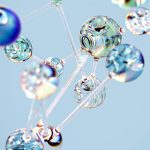neural-network
Neural Network: 7 Breakthroughs That Revolutionize AI Today
Ever wondered how machines learn, recognize patterns, and even make predictions with astonishing accuracy? The answer often lies within the intricate world of the neural network. These sophisticated computational models, inspired by the human brain, are at the heart of today’s most groundbreaking artificial intelligence advancements. From powering self-driving cars to revolutionizing medical diagnostics, understanding how these networks function is key to grasping the future of technology.
What is a Neural Network? Unpacking the Core Concept
At its core, a neural network is a series of algorithms that endeavors to recognize underlying relationships in a set of data through a process that mimics the way the human brain operates. It consists of interconnected “neurons” organized in layers: an input layer, one or more hidden layers, and an output layer. Each connection between neurons has a weight, and the network learns by adjusting these weights based on the data it processes.
The Inspiration Behind Neural Networks
The concept of neural networks dates back to the 1940s, drawing inspiration from biological neurons. Scientists sought to create systems that could learn from experience, much like humans do. This bio-inspired approach allows these models to identify complex patterns and make decisions without explicit programming for every single scenario.
How Neural Networks Learn and Adapt
Learning in a neural network primarily occurs through a process called backpropagation. When the network makes a prediction, it compares its output to the actual correct answer (in supervised learning). The difference, or “error,” is then propagated backward through the network, allowing each neuron’s weights to be slightly adjusted to reduce future errors. This iterative process refines the network’s ability to perform its task with increasing accuracy.
Exploring Advanced Neural Network Architectures
The field of deep learning has seen an explosion of innovative neural network architectures, each designed to tackle specific types of data and problems. These specialized designs significantly enhance a network’s ability to extract meaningful features and make robust predictions.
Recurrent Neural Networks (RNNs) and the Gated Recurrent Unit (GRU)
For sequential data like text, speech, or time series, Recurrent Neural Networks (RNNs) are particularly effective. Unlike traditional feedforward networks, RNNs have loops that allow information to persist from one step to the next, giving them a form of “memory.” However, standard RNNs can struggle with long-term dependencies. This is where advanced variants like the Gated Recurrent Unit (GRU) come into play.
The GRU, a simplified version of the Long Short-Term Memory (LSTM) network, uses “gates” to control the flow of information. These gates determine what information to keep, what to forget, and what to pass on, allowing the network to capture dependencies over longer sequences more efficiently. This makes GRUs invaluable for tasks such as natural language processing and speech recognition.
The Squeeze-and-Excitation Model: Enhancing Feature Representation
Another powerful innovation is the Squeeze-and-Excitation (SE) model, often integrated into Convolutional Neural Networks (CNNs). The SE block is designed to improve the quality of feature representations by explicitly modeling the interdependencies between channels of convolutional features. It performs two main operations:
- Squeeze: Global spatial information is aggregated into a channel descriptor. This step essentially compresses the spatial dimensions, capturing global context.
- Excitation: A self-gating mechanism learns a weighting for each channel, adaptively recalibrating channel-wise feature responses. This means the network can learn to emphasize more informative features and suppress less useful ones.
By selectively enhancing relevant features, SE blocks significantly boost the performance of deep learning models, particularly in image recognition tasks, as demonstrated in the original paper by Hu et al. from Momenta, Nanjing University, and the University of Oxford. You can read more about this groundbreaking work on arXiv: Squeeze-and-Excitation Networks.
Why Advanced Neural Network Models Outperform Traditional Methods
The evolution of deep learning, driven by sophisticated architectures like GRU and SE models, has allowed neural networks to surpass many traditional machine learning algorithms and even older AI methods (often referred to as SOAT methods). This superior performance stems from several key advantages:
- Automated Feature Learning: Unlike traditional methods that require manual feature engineering, deep neural networks can automatically learn hierarchical feature representations directly from raw data.
- Scalability with Data: As the amount of available data grows, deep learning models often improve in performance, whereas traditional methods can hit a ceiling.
- Handling Complexity: They excel at identifying intricate, non-linear patterns that are often missed by simpler algorithms, making them ideal for high-dimensional and complex datasets.
- Adaptability: Modern architectures are highly adaptable and can be fine-tuned for a wide range of tasks, from image classification to time series forecasting.
The ability to capture subtle nuances in data, coupled with robust learning mechanisms, positions advanced neural networks as the frontrunners in solving many of today’s most challenging AI problems. For further insights into the broader applications and impact, explore resources like IBM’s explanation of neural networks.
Implementing Neural Networks for Real-World Impact
The practical applications of neural networks are vast and continue to expand. From personal assistants on our smartphones to intricate financial fraud detection systems, their influence is undeniable. Consider their role in:
- Computer Vision: Image recognition, object detection, facial recognition.
- Natural Language Processing: Language translation, sentiment analysis, chatbots.
- Healthcare: Disease diagnosis, drug discovery, personalized medicine.
- Finance: Algorithmic trading, fraud detection, risk assessment.
- Autonomous Systems: Self-driving vehicles, robotics.
These examples merely scratch the surface of how neural networks are being deployed to create intelligent solutions that enhance efficiency, accuracy, and innovation across countless sectors.
The Future of Neural Network Innovation
The journey of the neural network is far from over. Researchers are continuously pushing boundaries, exploring new architectures, training methodologies, and ways to make these models more interpretable, efficient, and ethical. As data continues to proliferate and computational power grows, the capabilities of neural networks will undoubtedly reach new, unforeseen heights, shaping the very fabric of our technological future.
Conclusion
The neural network stands as a monumental achievement in artificial intelligence, offering unparalleled capabilities for pattern recognition, prediction, and learning. With advanced components like Gated Recurrent Units and Squeeze-and-Excitation models, these networks are not just outperforming traditional methods but are redefining what’s possible in AI. As we continue to refine and innovate, neural networks will remain at the forefront of technological progress, driving breakthroughs that impact every facet of our lives. Embrace the future of AI and explore how these powerful models can transform your world.
Abstract neural network connections, brain-inspired AI, deep learning architecture, GRU diagram, Squeeze-and-Excitation model visualization
Featured image provided by Pexels — photo by Markus Winkler








